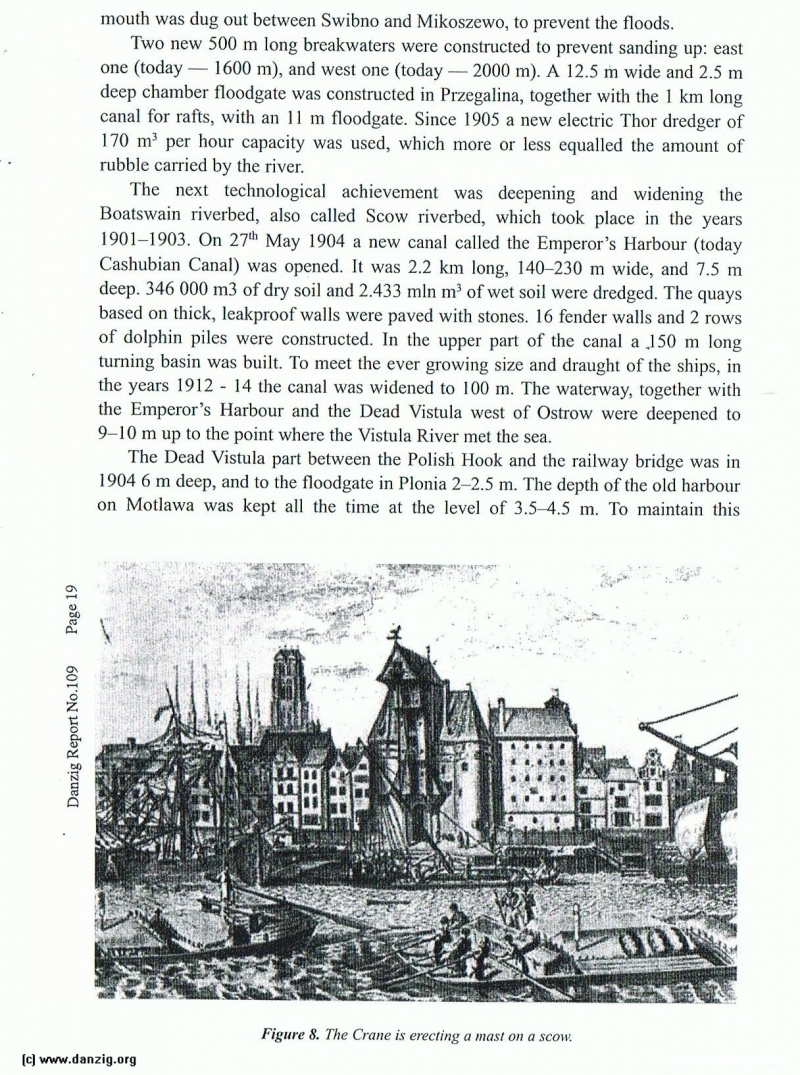
mouth was dug out between Swibno and Mikoszewo, to prevent the floods.
Two new 500 m long breakwaters were constructed to prevent sanding up: east one (today — 1600 rn), and west one (today —2000 m). A 12.5 rn wide and 2.5 rn deep chamber floodgate was constructed in Przegalina, together with the 1 km long canal for rafts, with an 11 m floodgate. Since 1905 a new electric Thor dredger of 170 m3 per hour capacity was used, which more or less equalled the amount of rubble carried by the river.
The next technological achievement was deepening and widening the Boatswain riverbed, also called Scow riverbed, which took place in the years 1901—1903. On 27th May 1904 a new canal called the Emperor’s Harbour (today Cashubian Canal) was opened. It was 2.2 km long, 140—230 m wide, and 7.5 rn deep. 346 000 rn3 of dry soil and 2.433 mm m3 of wet soil were dredged. The quays based on thick, leakproof walls were paved with stones. 16 fender walls and 2 rows of dolphin piles were constructed. In the upper part of the canal a .150 rn long turning basin was built. To meet the ever growing size and draught of the ships, in the years 1912 - 14 the canal was widened to 100 rn. The waterway, together with the Emperor’s Harbour and the Dead Vistula west of Ostrow were deepened to 9—10 m up to the point where the Vistula River met the sea.
The Dead Vistula part between the Polish Hook and the railway bridge was in 1904 6 m deep, and to the floodgate in Plonia 2—2.5 m. The depth of the old harbour on Motlawa was kept all the time at the level of 3.5—4.5 m. To maintain this
Danzig Report Vol. 1 - Nr. 109 - October - November - December - 2000, Page 25.
Hits: 3654
Added: 29/07/2015
Copyright: 2025 Danzig.org

